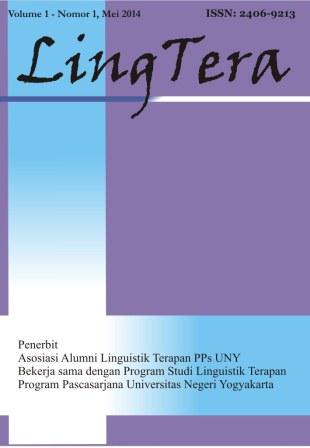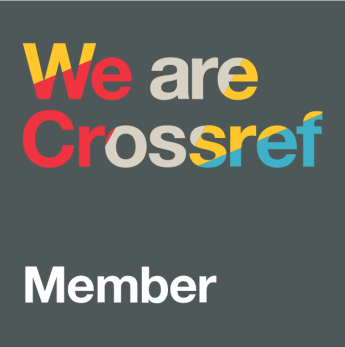Learning obstacles of al-Afʿāl al-Muʿrabāt among Madrasah Tsanawiyah students
DOI:
https://doi.org/10.21831/lt.v12i1.83381Keywords:
al-Afʿāl al-Muʿrabāt, iʿrāb, learning obstacles, Arabic grammar, didactical design researchAbstract
This study aims to identify the learning obstacles experienced by eighth-grade students at a Madrasah Tsanawiyah in studying the topic of al-Afʿāl al-Muʿrabāt. A qualitative approach was employed using the Didactical Design Research (DDR) method. Participants included 47 students and one Arabic teacher. Data were collected through tests and non-test instruments, including in-depth interviews. Data analysis followed Miles and Huberman’s framework, which involves data reduction, data presentation, and conclusion drawing. The findings reveal that students experienced both ontogenic and epistemological obstacles. Ontogenic obstacles included psychological factors (such as low motivation and interest) and instrumental difficulties, with technical incomprehension being the primary challenge. These findings suggest the need for instructional solutions. The study recommends the development of a DDR-based learning design tailored to students’ needs and informed by the identified learning obstacles.
References
Al-Badri, G. M. H. (2023). The impact of parsing and meaning in the interpretative orientations of Tusee. EDUJ, 4217(46), 511–520. https://doi.org/10.31185/eduj.Vol50.Iss1.3419
Alfalah, A., & Sopian, A. (2024). Simplifikasi iʿrāb Nahwu Imam Sibawaih perspektif Nahwu modern Ibrahim Mustafa / Simplification of iʿrāb Nahwu Imam Sibawaih according to the perspective of Ibrahim Mustafa’s modern Nahwu. Lingua Arabica, 5(1), 1–20. https://doi.org/10.36915/la.v5i1.93
Ardila, S., Wahyuni, W., & Nofrizal. (2023). Analisis faktor-faktor kesulitan belajar Bahasa Arab pada siswa kelas II SDIT Syahiral ‘Ilmi. Tatsqifiy: Jurnal Pendidikan Bahasa Arab, 4(2), 119–134. https://doi.org/10.30997/tjpba.v4i2.7501
Asrofi, F., & Lestanti, S. (2021). Application of expert systems to determine iʿrāb signs in a kalimah using the forward chaining method. JOSAR (Journal of Students Academic Research), 6(1). https://doi.org/10.35457/josar.v6i1.1460
Aziiza, Y. F., & Juandi, D. (2021). Students’ learning obstacles in understanding the concept of prism surface area. Journal of Physics: Conference Series, 1806(1). https://doi.org/10.1088/1742-6596/1806/1/012115
Azzahra, N., & Herman, T. (2022). Students’ learning obstacles in social arithmetic. Aksioma: Jurnal Program Studi Pendidikan Matematika, 11(1), 187–200. https://doi.org/10.24127/ajpm.v11i1.4621
Bintara, I. A., & Prabawanto, S. (2024). Learning obstacles of junior high school students on the concept of triangle. KnE Social Sciences, 2024, 500–509. https://doi.org/10.18502/kss.v9i13.15952
Dallasheh, W. (2024). Content analysis of the EFL textbook units according to Bloom’s taxonomy: Between theory and practice. Journal of Higher Education Theory and Practice, 24(4), 208–230. https://doi.org/10.33423/jhetp.v24i4.6960
Fadli, M. R. (2021). Memahami desain metode penelitian kualitatif. Humanika, 21(1), 33–54. https://doi.org/10.21831/hum.v21i1
Fauzi, I., & Suryadi, D. (2020). Learning obstacles in addition and subtraction of fractions in Grade 5 elementary schools. Mudarrisa: Jurnal Kajian Pendidikan Islam, 12(1), 51–68. https://doi.org/10.18326/mdr.v12i1.51-68
Gulvara, M. A., Suryadi, D., & Islamiyah, W. (2023). Learning obstacle dalam soal pemecahan masalah matematis siswa pada pembelajaran materi bangun ruang sisi datar. Jurnal Cendekia: Jurnal Pendidikan Matematika, 7(3), 2327–2337. https://doi.org/10.31004/cendekia.v7i3.2605
Hajib, Z. A., AlHennawy, J. M., & Fiqiyah, M. (2020). دعاوى إنكار الإعراب في العربية والرد عليها (Daʿāwā inkār al-iʿrāb fī al-ʿarabiyyah wa al-radd ʿalayhā). Ajami: Jurnal Bahasa dan Sastra Arab, 9(2), 179–194. https://doi.org/10.31314/ajamiy.9.2.179-194.2020
Hamad, Y. A. (2022). علامات الإعراب في العربية وأثرها بين القرائن (ʿAlāmāt al-iʿrāb fī al-ʿarabiyyah wa atharuhā bayna al-qurāʾin). Kufa Journal of Arts. https://doi.org/10.36317/kaj/2022/v1.i51.3549
Hanifa, R., & Yusra, S. R. (2023). Tailoring EFL lessons through materials adaptation: A look into an Acehnese teacher’s experiences. LingTera, 10(1), 1–14. https://doi.org/10.21831/lt.v10i1.58035
Hariyani, M., Herman, T., Suryadi, D., & Prabawanto, S. (2022). Exploration of student learning obstacles in solving fraction problems in elementary school. International Journal of Educational Methodology, 8(3), 505–515. https://doi.org/10.12973/ijem.8.3.505
Hendriyanto, A., Suryadi, D., Juandi, D., Dahlan, J. A., Hidayat, R., Wardat, Y., Sahara, S., & Muhaimin, L. H. (2024). The didactic phenomenon: Deciphering students’ learning obstacles in set theory. Journal on Mathematics Education, 15(2), 517–544. https://doi.org/10.22342/jme.v15i2.pp517-544
Hermawan, R. P., Nur’aeni, E., Lidinillah, D. A. M., & Apriani, I. F. (2021). Learning obstacle siswa kelas IV sekolah dasar pada materi keliling persegi. Dwija Cendekia: Jurnal Riset Pedagogik, 5(1), 142. https://doi.org/10.20961/jdc.v5i1.52359
Hoyos, A. J. R., Romero, F. D. J. V., Contreras, L. M. M., & Romero, I. C. P. (2023). Initial training of teachers in bachelor’s degrees: A didactic obstacle to professional performance in basic primary education. Russian Law Journal, 11(5), 5. https://www.russianlawjournal.org/index.php/journal/article/view/3311
Islamiyah, W., Suryadi, D., Prabawanto, S., & Gulvara, M. A. (2023). Learning obstacles for junior high school students on the concept of quadratic equations. Jurnal Cendekia: Jurnal Pendidikan Matematika, 7(3), 2313–2326. https://doi.org/10.31004/cendekia.v7i3.2609
Koly, A., Leton, S. I., Gawa, M. G. M., Fernandez, A. J., Lakapu, M., & Dosinaeng, W. B. N. (2023). Analisis learning obstacle siswa dari aspek epistemologi pada pemecahan masalah matematis. Asimtot, 4(2). https://doi.org/10.30822/asimtot.v4i2.2342
Lestari, G. P., Yensy, N. A., Hanifah, H., Agustinsa, R., & Susanto, E. (2022). Analisis soal latihan buku matematika Kurikulum 2013 kelas VIII materi lingkaran berdasarkan taksonomi Bloom. Jurnal Penelitian Pembelajaran Matematika Sekolah (JP2MS), 6(1), 23–31. https://doi.org/10.33369/jp2ms.6.1.23-31
Maharani, R. D., Dasari, D., & Nurlaelah, E. (2022). Analisis hambatan belajar (learning obstacle) siswa SMP pada materi peluang. Aksioma: Jurnal Program Studi Pendidikan Matematika, 11(4), 3201. https://doi.org/10.24127/ajpm.v11i4.6214
Mahmud, M. R., Turmudi, T., Sopandi, W., Rohimah, S. M., & Pratiwi, I. M. (2023). Learning obstacles analysis of lowest common multiple and greatest common factor in primary school. Jurnal Elemen, 9(2), 440–449. https://doi.org/10.29408/jel.v9i2.12359
Maimun, E. K., & Maulani, H. (2022). Analysis of learning problems Bahasa Arab peminatan for class XII students of religious programs. Alsuna: Journal of Arabic and English Language, 5(2), 129–149. https://doi.org/10.31538/alsuna.v5i2.2783
Meika, I., Melinda, N. W., Rifa’i, R., & Sujana, A. (2022). Learning obstacle siswa tunagrahita pada materi bilangan bulat. Jurnal Penelitian dan Pembelajaran Matematika, 15(2), 292. https://doi.org/10.30870/jppm.v15i2.16361
Milton, J., & Masrai, A. (2020). Vocabulary and listening. In The Routledge handbook of second language acquisition and speaking (pp. 45–59). Routledge.
Mohammed, A. Q. (2024). مراحل علم النحو (Marāḥil ʿIlm al-Naḥw). Avrasya Sosyal ve Ekonomi Araştırmaları Dergisi, 11(2), 0–2. https://dergipark.org.tr/tr/pub/asead/issue/84469/1424563
Nafiati, D. A. (2021). Revisi taksonomi Bloom: Kognitif, afektif, dan psikomotorik. Humanika, 21(2), 151–172. https://doi.org/10.21831/hum.v21i2.29252
Noto, M. S., Pramuditya, S. A., & Handayani, V. D. (2020). Exploration of learning obstacle based on mathematical understanding of algebra in junior high school. Eduma: Mathematics Education Learning and Teaching, 9(1), 14. https://doi.org/10.24235/eduma.v9i1.5946
Nurbayan, Y., Sanusi, A., Wulan, N. S., & Ismail, Z. (2024). Pedagogical competence design: Arabic teaching as a foreign language based on a praxeological approach. Alsuniyat, 7(2). https://doi.org/10.17509/alsuniyat.v7i2.73132
Pawestri, N. A., Jalil, A., & Sufiyana, A. Z. (2020). Analisis hambatan belajar Bahasa Arab di Madrasah Diniyah Takmiliyah Awaliyah Ainul Ulum, Kecamatan Senduro, Kabupaten Lumajang. Pendidikan Islam, 5(2), 17–23.
Radza, R. (2023). Challenges faced by educators in the implementation of flipped classroom. LingTera, 10(2), 35–43. https://doi.org/10.21831/lt.v10i2.62920
Sahidin, L., Iskandar, A., Rahman, A., & Mahlani. (2024). Analisis kesulitan belajar Bahasa Arab siswa kelas VII MTs DDI Walimpong, Kec. Marioriwawo, Kab. Soppeng. Holistik Analisis Nexus, 1(7), 206–212. https://doi.org/10.62504/nexus796
Saleh, M. H., & Kara, M. (2022). علم النحو ومدى علاقته بتفسير القرآن الكريم (ʿIlm al-Naḥw wa muddā ʿalāqatihi bi-tafsīr al-Qurʾān al-Karīm). Bayburt Üniversitesi İlahiyat Fakültesi Dergisi, 15(15), 115–134. https://doi.org/10.47098/bayburt-ilahiyat.1111175
Setianingrum, A., Iriawan, S. B., & Mufliva, R. (2023). Desain didaktis pada pembelajaran matematika materi pecahan kelas IV sekolah dasar. Jurnal Pendidikan Guru Sekolah Dasar, 8(1), 63–75.
Sidik, G. S., Suryadi, D., & Turmudi, T. (2021). Learning obstacle on addition and subtraction of primary school students: Analysis of algebraic thinking. Education Research International, 2021, Article 5935179. https://doi.org/10.1155/2021/5935179
Suryadi, D. (2019). Landasan filosofis penelitian desain didaktis (DDR). Gapura Press.
Syahdah, V. S., & Irvani, A. I. (2023). Kesulitan menanamkan jiwa percaya diri terhadap kemampuan mengerjakan soal fisika. Jurnal Pendidikan dan Ilmu Fisika, 3(1), 163. https://doi.org/10.52434/jpif.v3i1.1586
Taufik. (2020). Mazhab-mazhab ilmu Nahwu dalam sastra Arab klasik. Al-Af’idah: Jurnal Pendidikan Bahasa Arab dan Pengajarannya, 4(1), 65–87. https://doi.org/10.52266/al-afidah.v4i1.498
Ulfah, Y., & Insaniyah, A. L. (2023). Kesulitan belajar Bahasa Arab bagi mahasiswa Program Studi Pendidikan Agama Islam Universitas Islam Zainul Hasan Genggong. Tadris Al-Arabiyat: Jurnal Kajian Ilmu Pendidikan Bahasa Arab, 3(1), 79–92. https://doi.org/10.30739/arabiyat.v3i1.1824
Ulum, M., & Nuriyah, K. (2023). Implementasi kitab Nubdzatul Bayān dalam pembelajaran Nahwu dan Shorrof bagi pemula. Jurnal Educatio FKIP UNMA, 9(2), 1126–1132. https://doi.org/10.31949/educatio.v9i2.5215
Zakaria, A. (2023). Al-Muyassar fī ʿIlmi an-Naḥwi. IBN AZKA Press.
Zuhriyah, N. (2020). Iʿrāb: Antara kontroversi, problematika dan solusi pembelajarannya. Al-Af’idah: Jurnal Pendidikan Bahasa Arab dan Pengajarannya, 4(2), 81–93. https://doi.org/10.52266/al-afidah.v4i2.1017
Downloads
Published
How to Cite
Issue
Section
Citation Check
License
Copyright (c) 2025 Adibah Ulaya Putri

This work is licensed under a Creative Commons Attribution-ShareAlike 4.0 International License.
LingTera allows readers to read, download, copy, distribute, print, search, or link to its articles' full texts and allows readers to use them for any other lawful purpose. The journal allows the author(s) to hold the copyright without restrictions. Finally, the journal allows the author(s) to retain publishing rights without restrictions.
- Authors are allowed to archive their submitted articles in an open-access repository.
- Authors are allowed to archive the final published article in an open-access repository with an acknowledgment of its initial publication in this journal.

Psychology, Evaluation, and Technology in Educational Research is licensed under a Creative Commons Attribution-ShareAlike 4.0 International License.
Based on a work at https://petier.org/index.php/PETIER.









